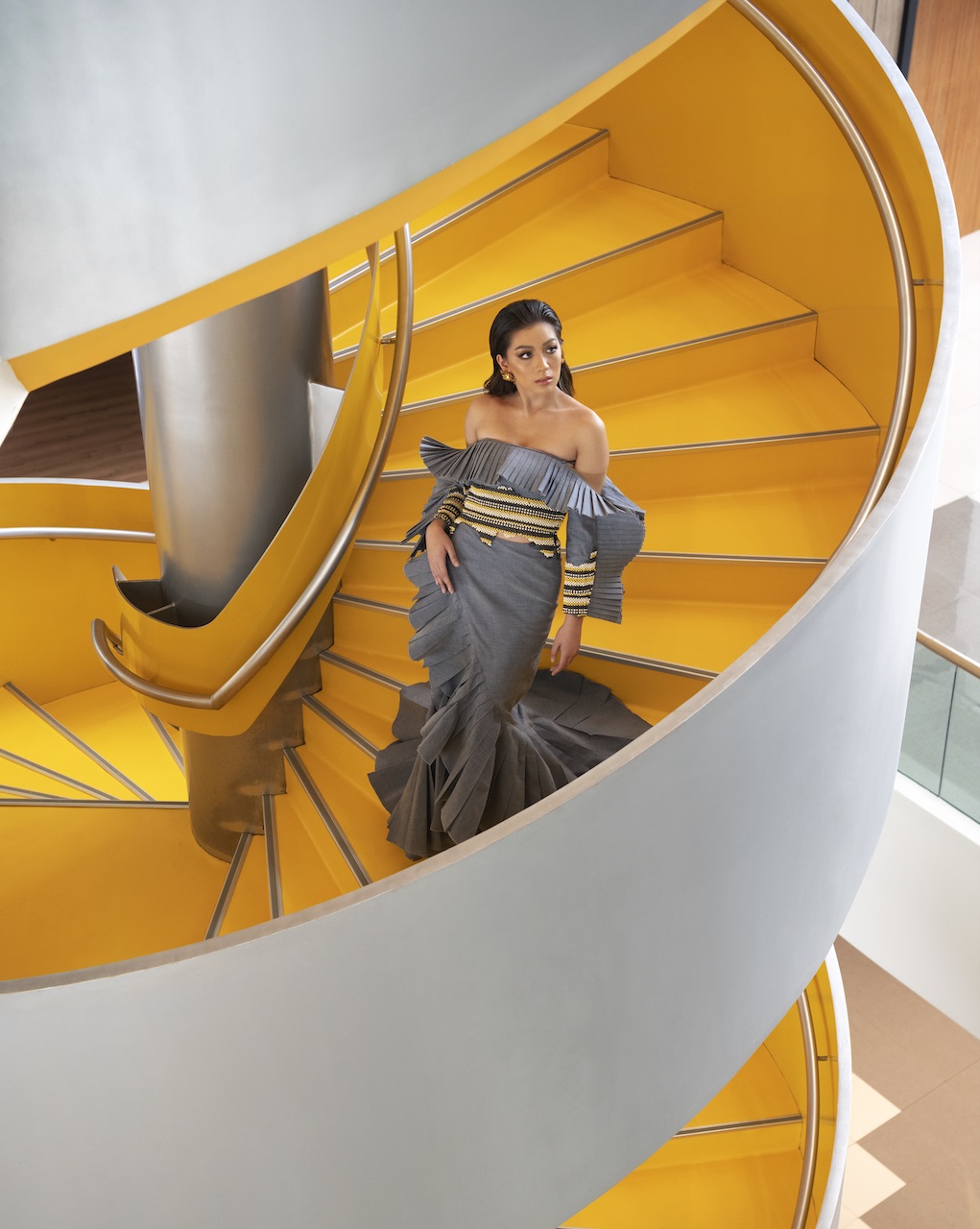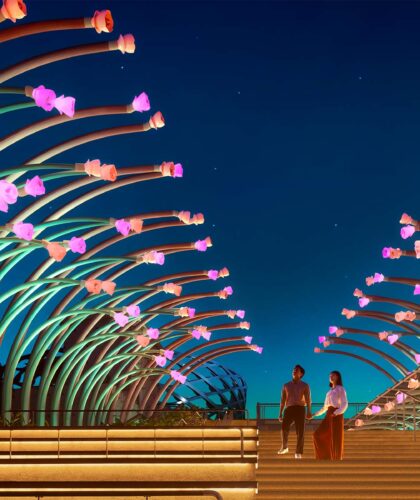As you travel across the sprawling downtown, inching your way through heavy traffic past weathered warehouses and fading monuments, it’s hard to believe Cebu City’s reputation as a design-centric town. However, the “Queen City of the South” is now home to some of the Philippines’ leading creatives. Decades of manufacturing for the world’s biggest furniture and fashion labels have given Cebu a unique advantage – an extremely skilled and highly professional workforce.
Cebu is now moving away from fabrication for others to creating their own unique designs that rival the overseas labels that once employed them. The city, and the surrounding ocean that makes Cebu a popular resort destination, clearly have an influence on these designs. “Fluid”, “laidback” and “free” are recurring themes that personify Cebu fashion today. To learn more, we talk to four leading designers about how the city inspires their aesthetic and what makes Cebu a centre for Filipino fashion.
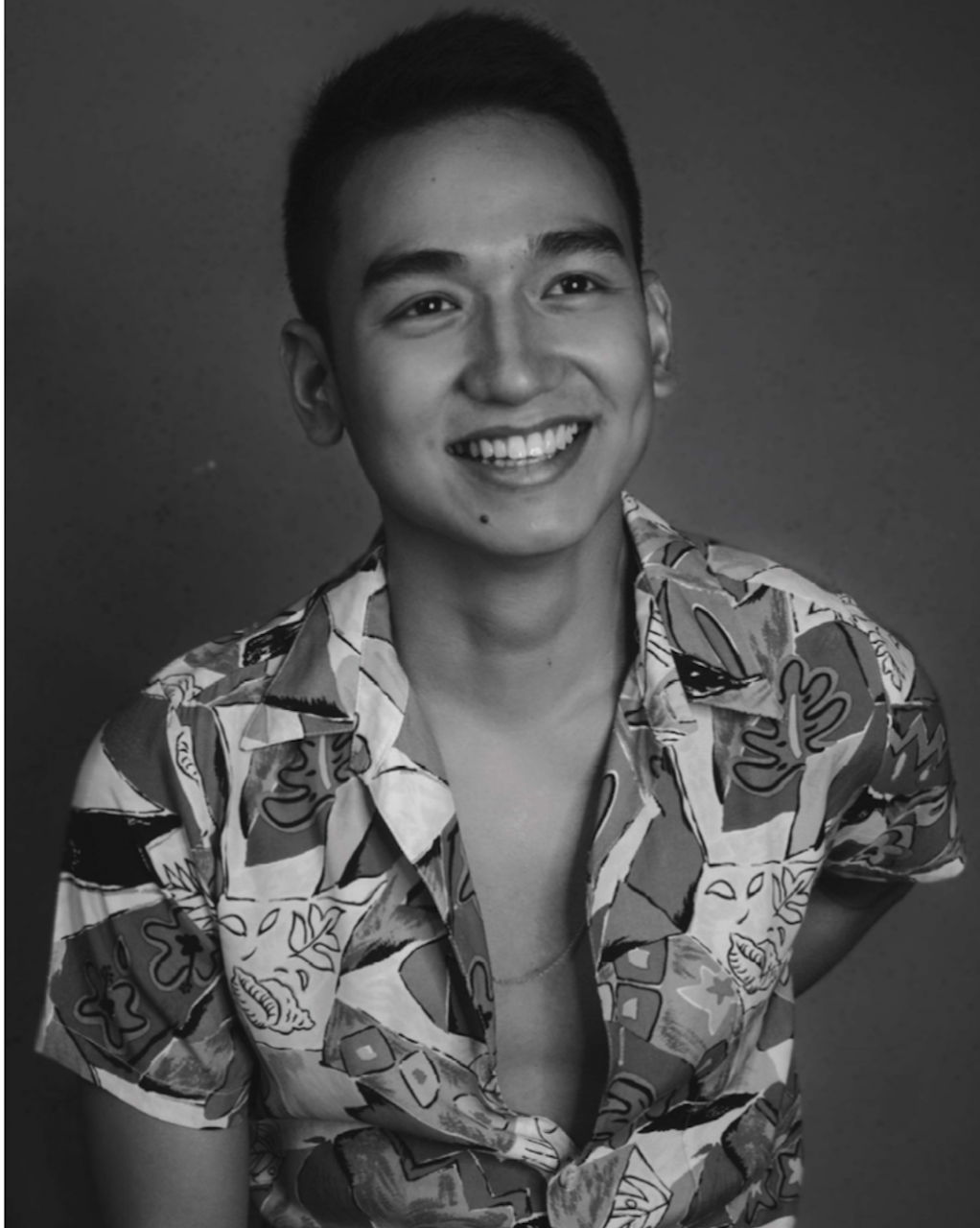
Youthful Edge, Kiko Kintanar
This 26-year-old has always been surrounded by beautiful aesthetics. Kintanar’s mother, Christine, an established accessories designer in Cebu, greatly influenced his love for design. After studying architecture in university, he decided to pursue his true passion; he eventually graduated from The Fashion Institute of the Philippines in 2017, where he was awarded Designer of the Year. Kintanar then went on to receive the prestigious Ramponi Prize in Milan in September 2018 with his debut collection, making him one of Cebu’s most exciting young designers. “I was always drawn to design in general but clothing felt a bit more personal,” Kintanar says. “I wanted to offer people a sense of empowerment through something they put on, and be surprised by how a garment can enhance your emotions.”
Kintanar’s chic designs are edgy and well- constructed, with a sound mix of structure and whimsy. His pieces are not simple garments but encompass an entire ensemble, such as his recent creation: a form-fitting long-sleeved dress with a ruffled hem topped with a fully beaded net skirt, encrusted with more beads, to resemble coral formations. “This look was my translation of Cebu to the world,” Kintanar explains. “It was inspired by the sea and the world under the waves.”
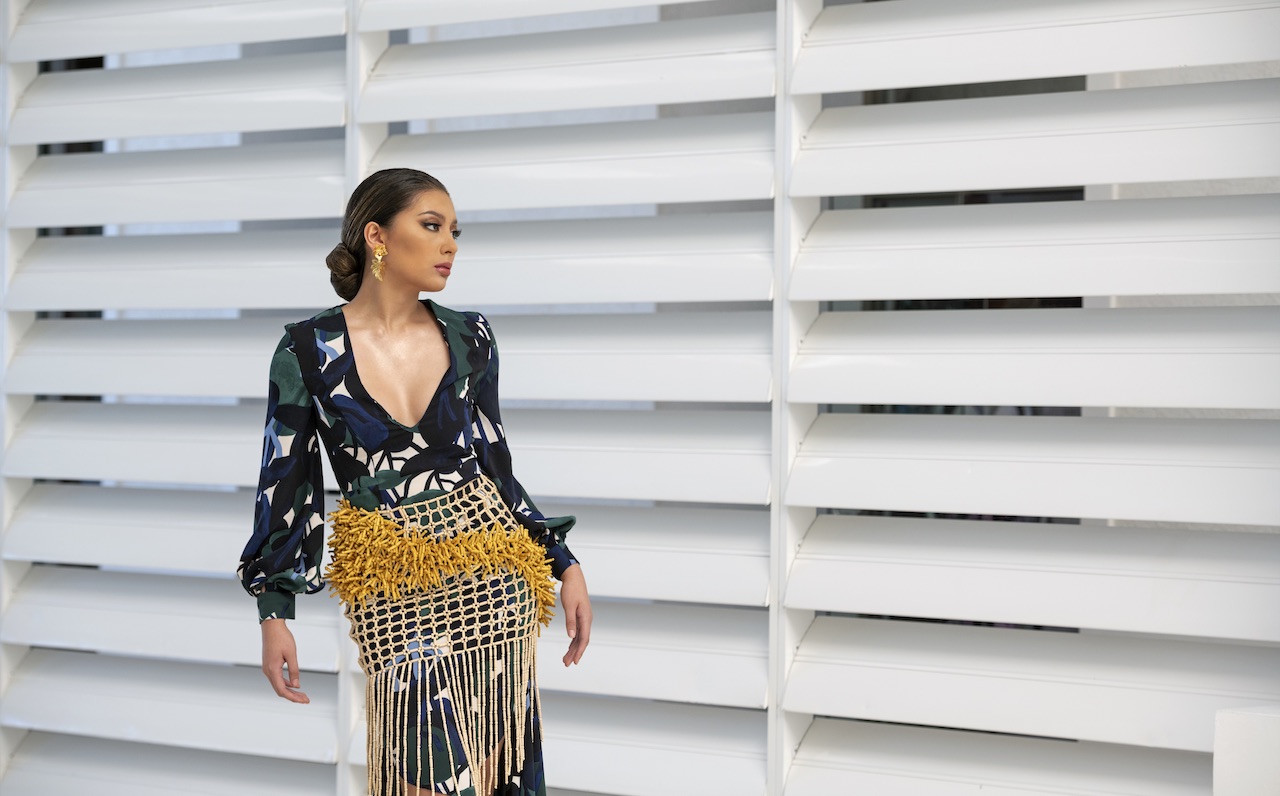
What makes Cebu fashion so unique?
There is no real local aesthetic, it’s more of a feeling of what Cebu has to offer. The city and the island infuse me with a sense of freedom and excitement that becomes evident in my creations. I’ve never really considered my style to be “Cebuano” but growing up on this beautiful island greatly influences my designs and the emotions I hope to evoke.
How does your background in architecture influence your work?
To me, fashion and architecture have a similar approach to design and purpose. Architecture houses people just as fashion houses the body. I’ve always correlated the two in my work.
What else inspires your work?
Life in general inspires me – what I am doing, where I am and the people I am with. It can be a random object I come by, or an old memory that I remember.
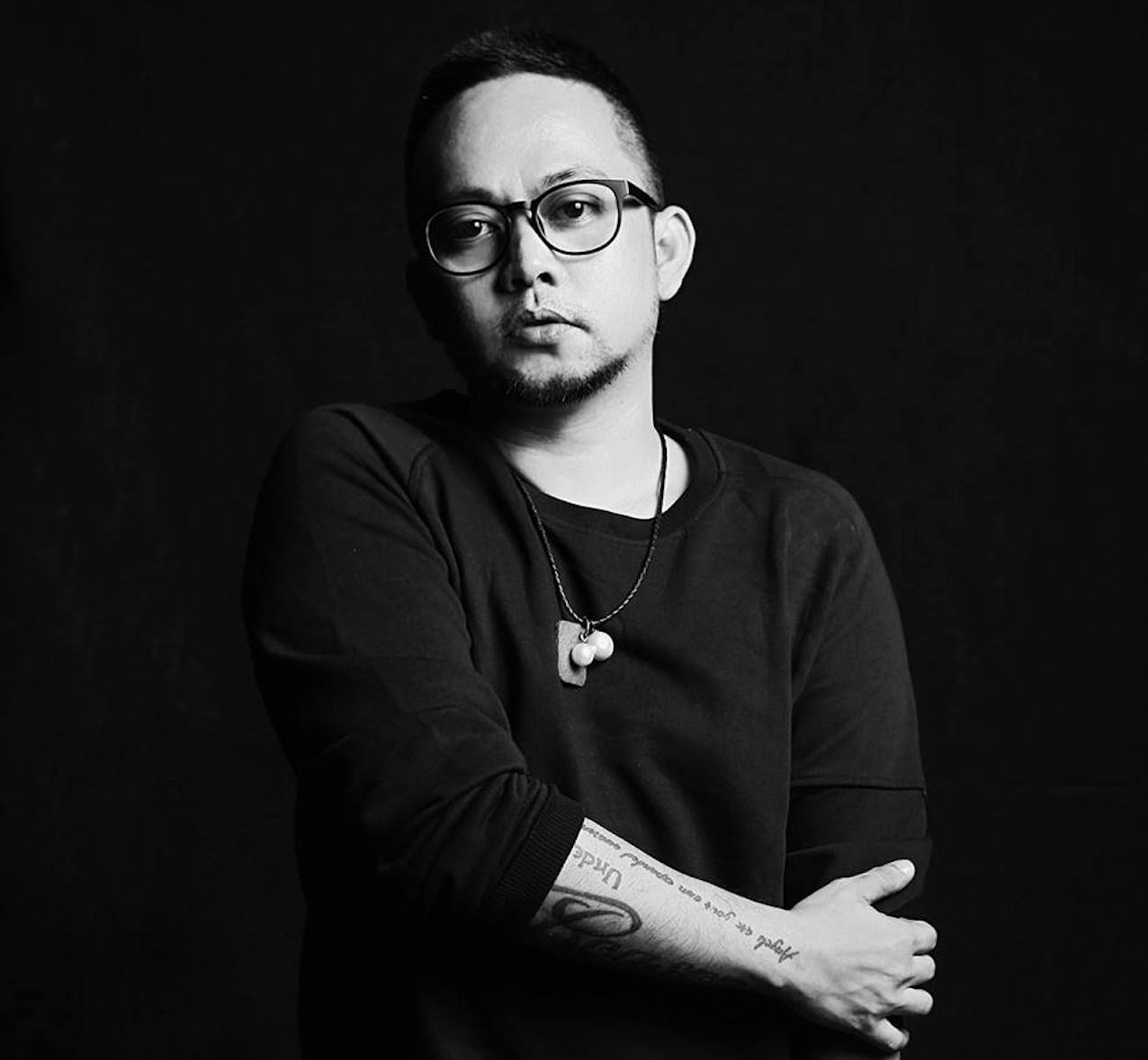
Modern Romance, Hanz Coquilla
Flowing organza, frothy ruffles and silken bows are just some of the signature elements in Hanz Coquilla’s designs. The 36-year-old draws inspiration from his favourite vintage eras – the 1920s to 1950s – and applies it to the modern woman. Design was always his passion, so much so that he left his medical technology studies in university at the age of 18, and started his career from the ground up – in part by training under established Cebu designer, Harley Ruedas. In 2009, Coquilla decided to strike out on his own after placing fifth on the second season of Project Runway Philippines. Since then, his label Alta Costura has been a steady success – with Coquilla himself going on to become the first Filipino designer to present at the Macao Fashion Festival in November 2018.
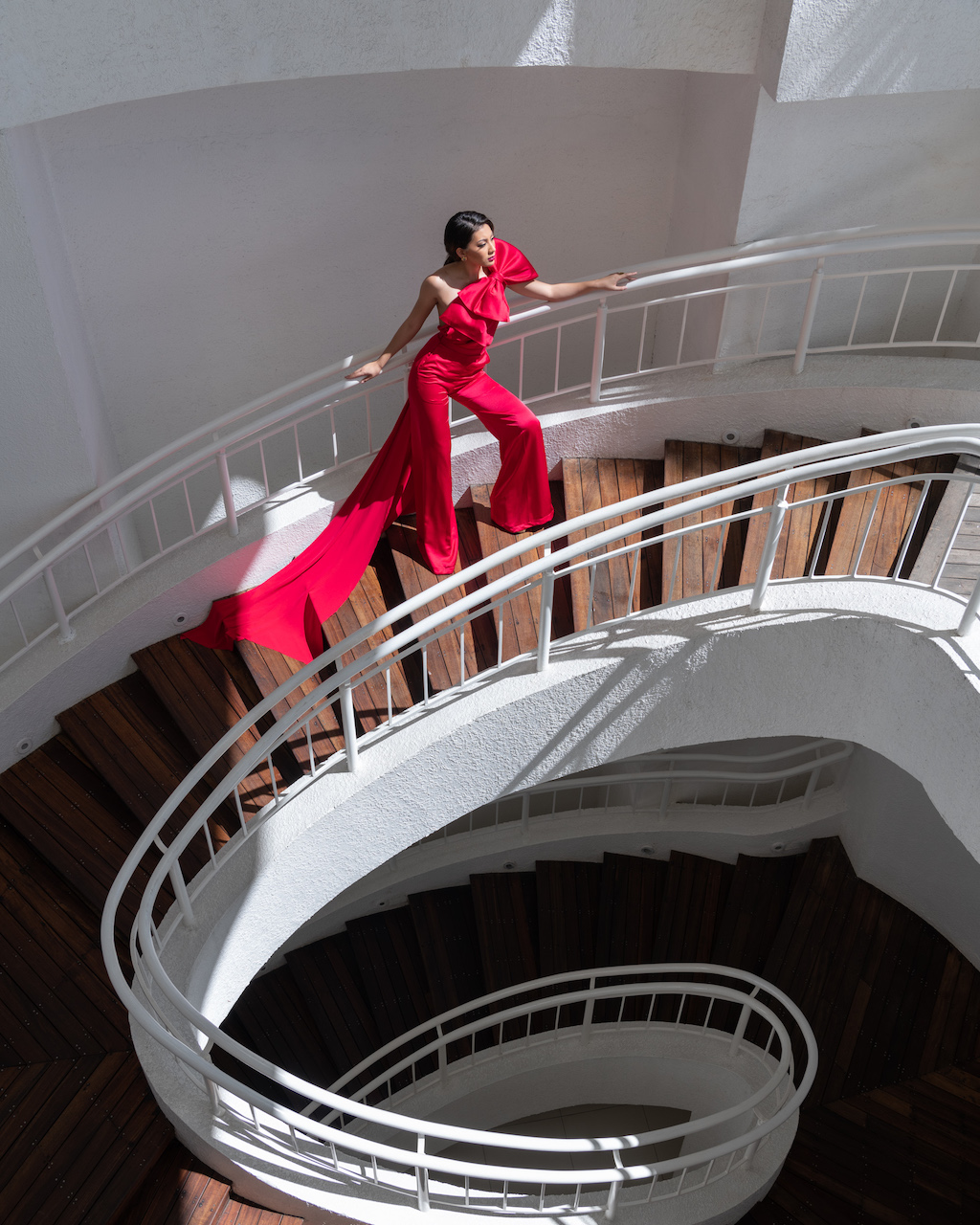
What does it mean to be a Cebu designer?
I’m lucky to live in a place where it’s so relaxed. A two- hour drive gets you to some of the most beautiful beaches, like Moalboal or Kandaya. At the same time, Cebu is also developing quickly and Cebuano products are making waves on the global scene.
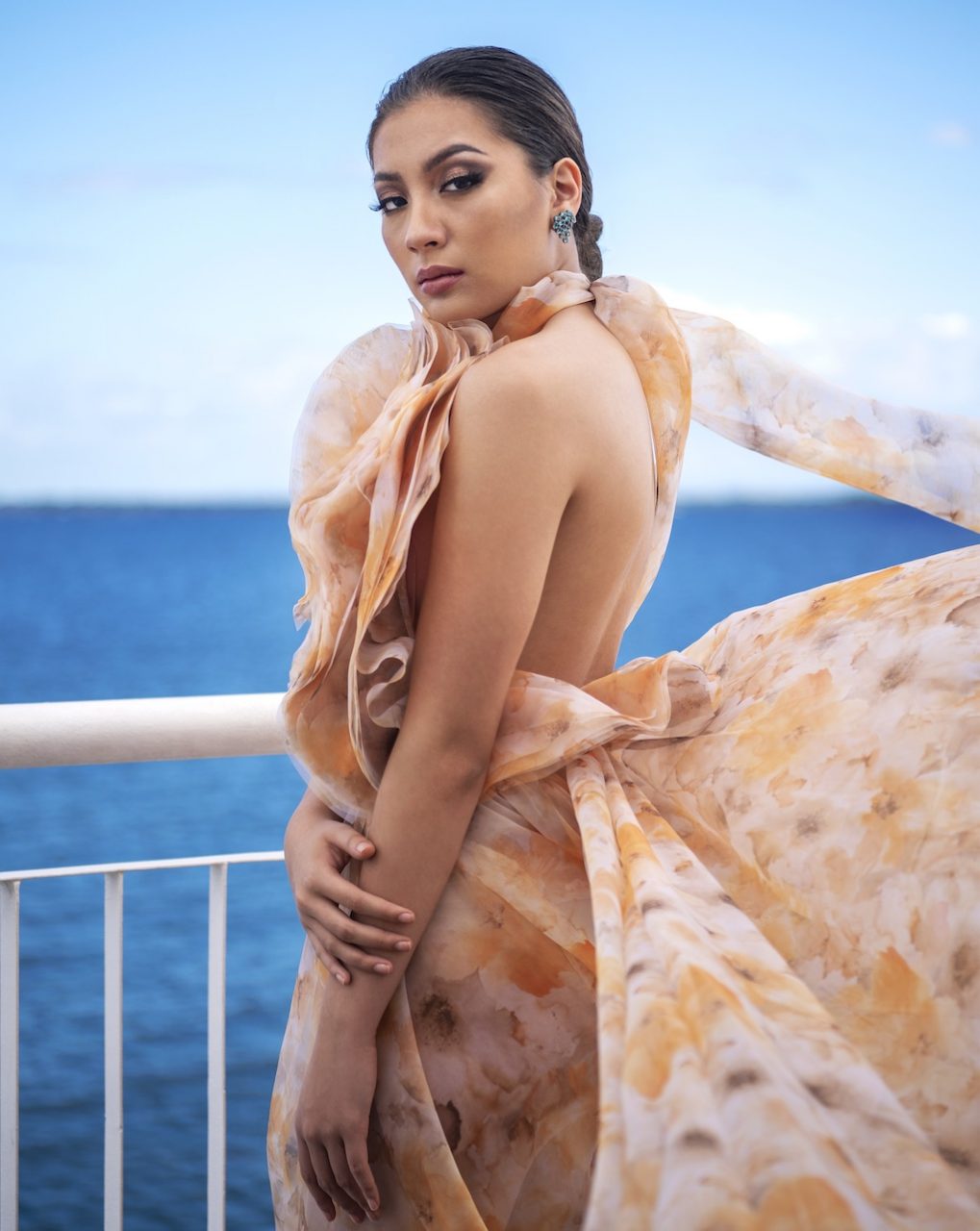
How does this vibe translate into your designs?
The mystery and the depth of the ocean is an endless source of inspiration. I translate this to my designs with the use of flowy and fluid fabrics like silks, satins and chiffons.
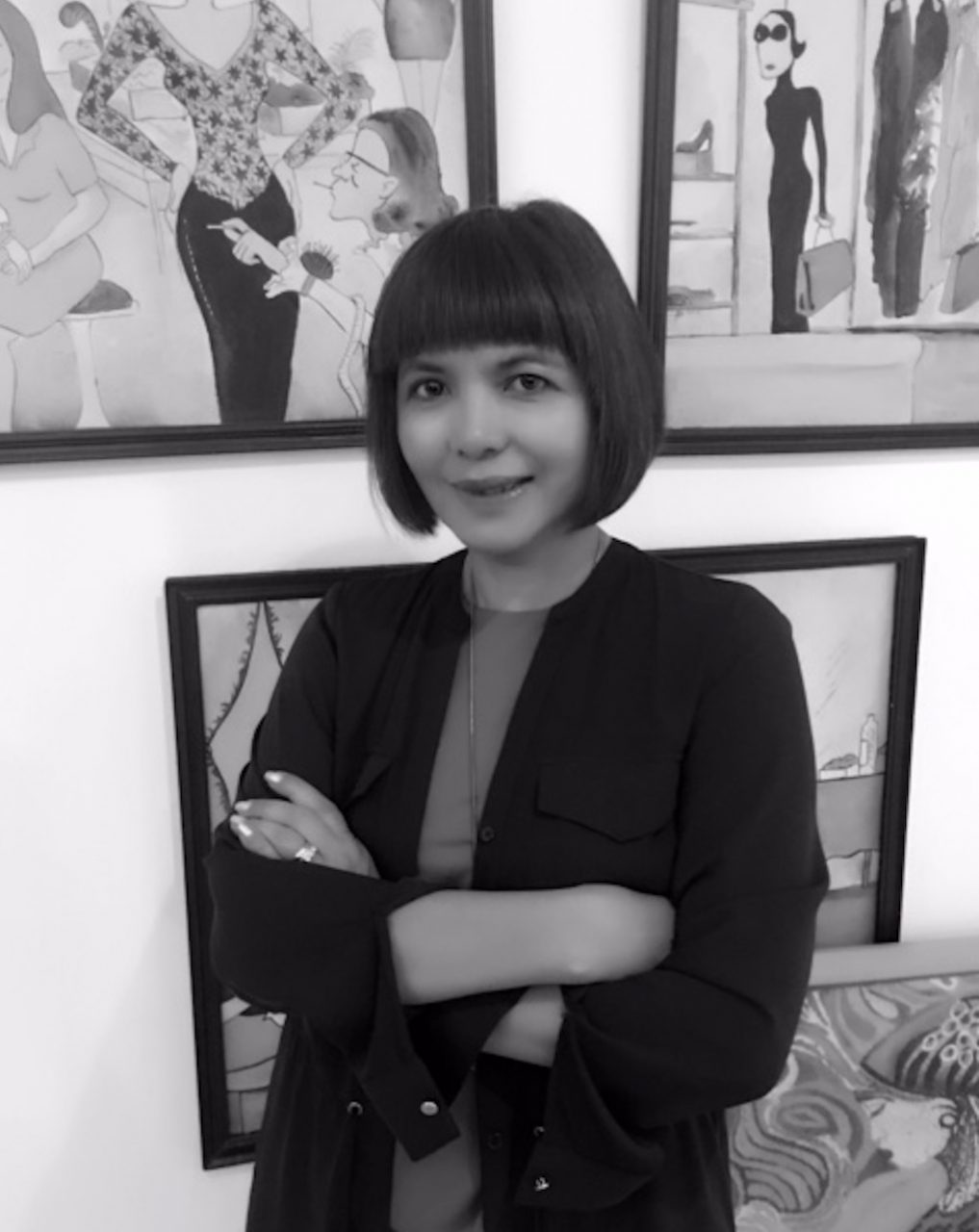
Comfortable Femininity, Arcy Gayatin
With over 30 years in the industry, Arcy Gayatin is a household name and a member of various fashion councils in the Philippines. The fabric-driven designer confesses she can’t even begin to sketch without getting hold of the material first. “I love to experiment and make a fabric my own,” Gayatin explains.
What is most important to her, however, is that the women who wear her designs feel comfortable and confident. This is apparent in her choice of silhouettes – embellished jumpsuits, jersey drapery and flirty but functional mini dresses. “My clients don’t wear clothes for fashion’s sake but rather to please themselves. They don’t dress for anyone but themselves,” Gayatin declares.
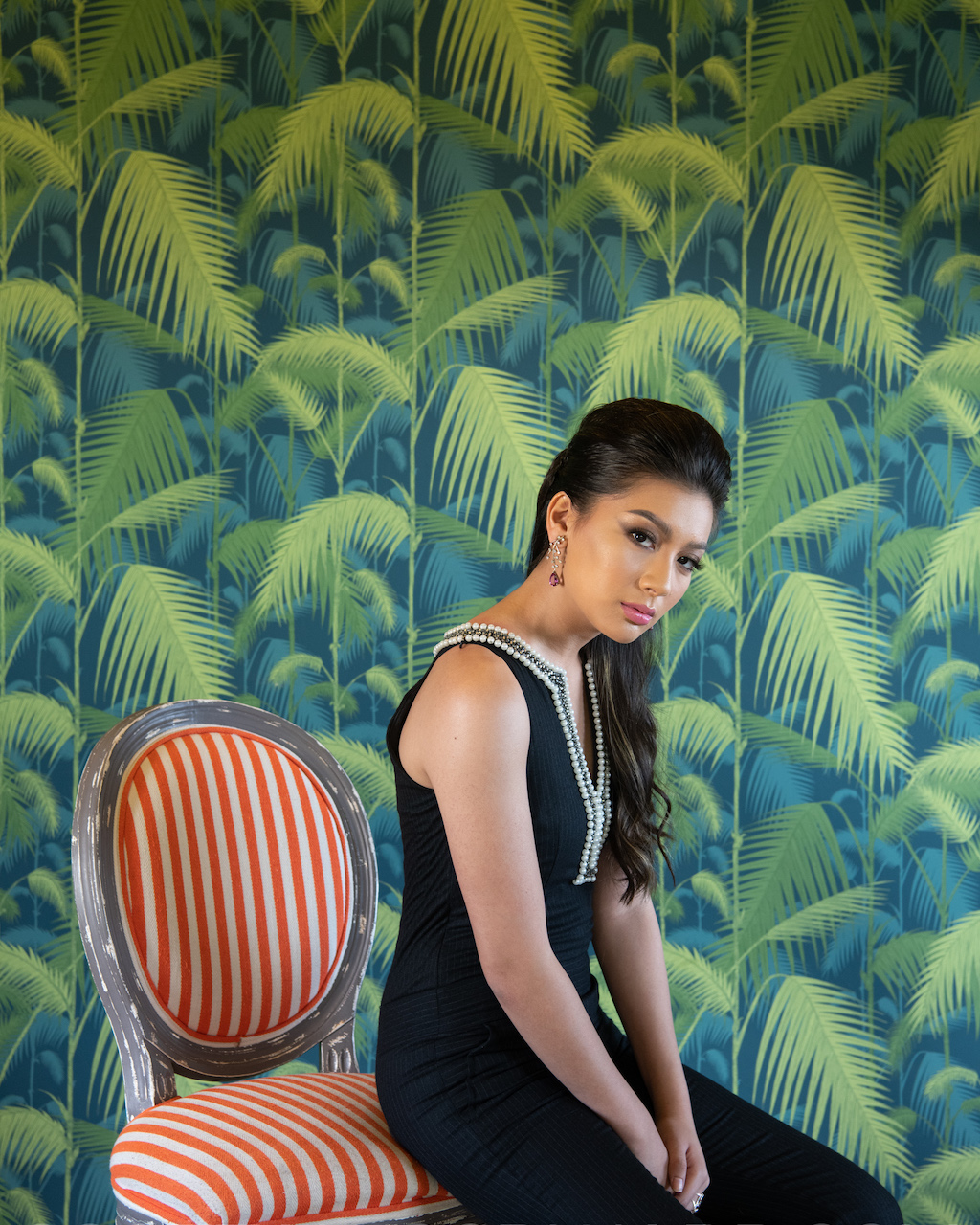
Is there a local Cebu aesthetic?
Since Cebu is a resort town, the style here is definitely more laidback than elsewhere. To be a fashion designer here, you also have to be keen in the pragmatic ways of the Cebuano, meaning you have to give your clients more bang for their buck.
How has the Cebu fashion scene changed over the years?
The fashion landscape has changed tremendously since the arrival of major retailers like Zara and H&M. It can get frustrating to be compared to these brands, especially in terms of price. There is a vast difference between ready-to-wear pieces from a factory and made-to-measure apparel from an atelier. I have to keep explaining this to some clients. We strive for quality.
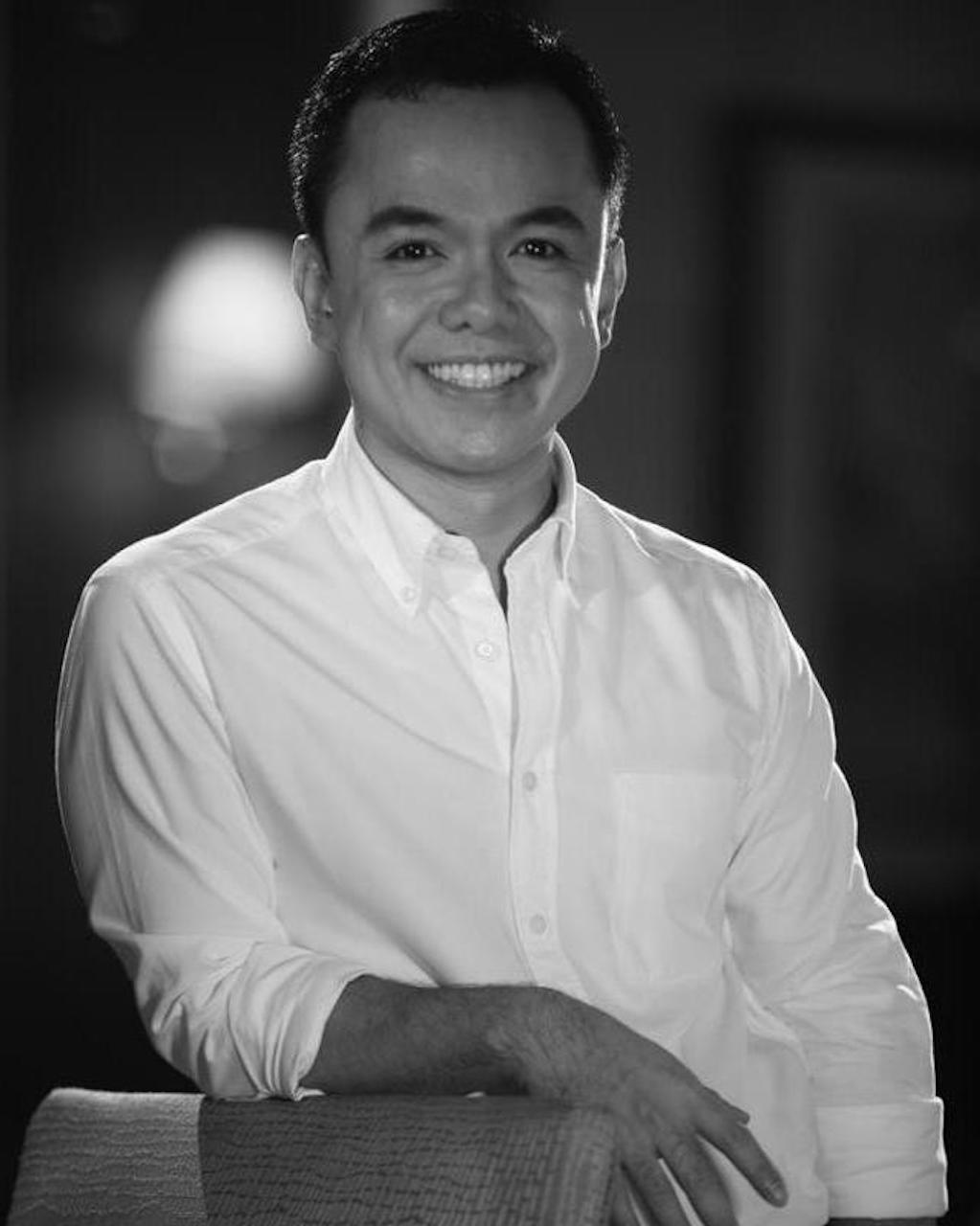
Classic Glamour, Jun Escario
Known for his exquisite bridal and evening wear, Jun Escario is one of the more established names in Cebu fashion, with a client list that ranges from the local glitterati to Taylor Swift. Inspired by the graceful movement of the ocean’s waves, the 46-year-old Escario likes to work with the bias cut, where the material is cut against the grain. “I like that Halston vibe or flapper look,” he explains. His penchant for slinky and sensual dresses with fabric cut and sewn on the diagonal is well known. “Even fellow designers will see a bias cut dress and say – that’s very Jun!”
The bulk of his current work is now in corporate wear, designing chic ensembles for the staff of luxury Filipino resorts like Solaire, Amorita and City of Dreams. He still accepts couture, notably for ball and prom season, and puts out ready-to-wear collections twice a year, as well as an annual bridal collection.
He explains how working on corporate wear has influenced the evolution of his own high fashion label, as he moves away from his usual sleek look. “I experiment more. I want to create exciting designs, but still bear in mind that relaxed elegance.”
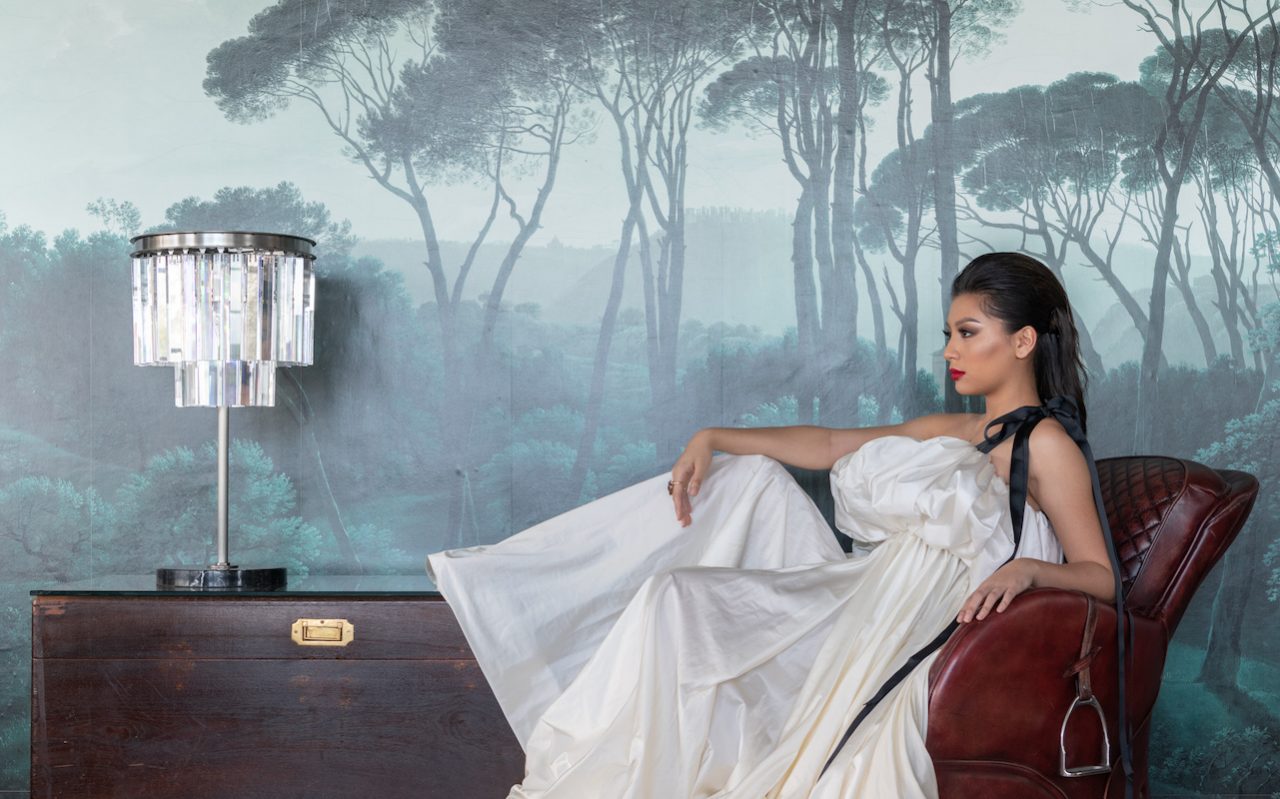
What inspires you?
I love the beach. On weekends, I’m always in my beach house in Bohol and I bring that to everything I do – the flow of the fabric, how it drapes and that elegant ease. For my evening wear, I make beautiful silk sarongs. I grew up wearing sarongs. I also draw inspiration from the calm colours of the sea, and use a lot of whites, beiges and blues in my designs.
Are there any local materials you like to use?
Cebu has an amazing selection of skilled artisans. I have my own secret weapon: a Frenchman named Francis Dravigny who lives in Cebu and produces weaves for the wall coverings of big French luxury design houses such as Hermès. When I need something special, like abaca (a type of plant fibre) and silk or abaca with a touch of leather, he can create something special for me.
How do you unwind when you’re in town?
The Pig & Palm is our go-to-place when I’m with friends. I love their selection of gin. I also just spent the entire day lounging and having drinks at Mövenpick by the beach. I also set some time aside for a good massage and facial at Healing Point Spa at The Greenery.
SEE ALSO: The new romantics: Fashion in Old Manila
This article was originally published in the April 2019 issue of Silkwinds magazine

